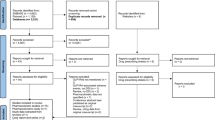Abstract
Objective
The purpose of this study was to elucidate the pharmacokinetics of each enantiomer of lansoprazole and 5-hydroxylansoprazole in three different CYP2C19 genotype groups of Japanese subjects.
Methods
Healthy subjects (n=18), of whom 6 were homozygous extensive metabolizers (homEMs), 6 were heterozygous extensive metabolizers (hetEMs) and 6 were poor metabolizers (PMs), participated in the study. After a single oral dose of 60 mg of racemic lansoprazole, the plasma concentrations of the lansoprazole enantiomers, 5-hydroxylansoprazole enantiomers and lansoprazole sulfone were measured for 24 h post-dose.
Results
The plasma concentrations of (R)-lansoprazole were remarkably higher in all three CYP2C19 genotype groups than those of the corresponding (S)-enantiomer. The mean maximum plasma concentration (C max) of (S)-lansoprazole differed significantly among the three groups, whereas there was no difference for the (R)-enantiomer. The relative area under the plasma concentration (AUC) ratios of (R)- and (S)-lansoprazole in the homEMs, hetEMs, and PMs were 1:1.5:4.0 and 1:1.8:7.4, respectively. Yet, the relative AUC ratios of 5-hydroxylansoprazole to lansoprazole for the (R)- and (S)-enantiomers in the homEMs, hetEMs, and PMs were almost the same (1:0.73:0.12 and 1:0.77:0.13, respectively). However, the AUC ratios of the (S)-enantiomer were 13-fold greater for the three CYP2C19 genotypes than those of the corresponding (R)-enantiomer.
Conclusions
The magnitude of the contribution of CYP2C19 to the 5-hydroxylation of (S)-lansoprazole was greater than that of the (R)-enantiomer. The R/S ratios for the AUC of lansoprazole for the homEMs, hetEMs and PMs were 12.7, 8.5 and 5.8, respectively, suggesting a significant effect of CYP2C19 polymorphisms on the stereoselective disposition of lansoprazole.



Similar content being viewed by others
References
Nagaya H, Satoh H, Maki Y (1990) Possible mechanism for the inhibition of acid formation by the proton pump inhibitor AG-1749 in isolated canine parietal cells. J Pharmacol Exp Ther 252:1289–1295
Nagaya H, Inatomi N, Nohara A, Satoh H (1991) Effects of the enantiomers of lansoprazole (AG-1749) on (H++K+)-ATPase activity in canine gastric microsomes and acid formation in isolated canine parietal cells. Biochem Pharmacol 42:1875–1878
Pearce RE, Rodrigues AD, Goldstein JA, Parkinson A (1996) Identification of the human P450 enzymes involved in lansoprazole metabolism. J Pharmacol Exp Ther 277:805–816
Katsuki H, Nakamura C, Arimori K, Fujiyama S, Nakano M (1997) Genetic polymorphism of CYP2C19 and lansoprazole pharmacokinetics in Japanese subjects. Eur J Clin Pharmacol 52:391–396
Pichard L, Curi-Pedrosa R, Bonfils C, Jacqz-Aigrain E, Domerque J, Joyeux H, Cosme J, Guengerich FP (1995) Oxidative metabolism of lansoprazole by human liver cytochromes P450. Mol Pharmacol 47:410–418
Sohn DR, Kwon JT, Kim HK, Ishizaki T (1997) Metabolic disposition of lansoprazole in relation to the S-mephenytoin 4′-hydroxylation phenotype status. Clin Pharmacol Ther 61:574–582
Sakai T, Aoyama N, Kita T, Sakaeda T, Nishiguchi K, Nishitora Y, Hohda T, Sirasaka D, Tamura T, Tanigawara Y, Kasuga M, Okumura K (2001) CYP2C19 genotype and pharmacokinetics of three proton pump inhibitors in healthy subjects. Pharm Res 18:721–727
Furuta T, Shirai N, Xiao F, Ohashi K, Ishizaki T (2001) Effect of high-dose lansoprazole on intragastic pH in subjects who are homozygous extensive metabolizers of cytochrome P4502C19. Clin Pharmacol Ther 70:484–492
Kim K, Shon J, Park J, Yoon Y, Kim M, Yun D, Kim M, Cha I, Hyun M, Shin J (2002) Enantioselective disposition of lansoprazole in extensive and poor metabolizers of CYP2C19. Clin Pharmacol Ther 72:90–99
Katsuki H, Hamada A, Nakamura C, Arimori K, Nakano M (2001) Role of CYP3A4 and CYP2C19 in the stereoselective metabolism of lansoprazole by human liver microsomes. Eur J Clin Pharmacol 57:709–715
De Morais SM, Wilkinson GR, Blaisdell J, Meyer UA, Nakamura K, Goldstein JA (1994) Identification of a new genetic defect responsible for the polymorphism of (S)-mephenytoin metabolism in Japanese. Mol Pharmacol 46:594–598
Miura M, Tada H, Suzuki T (2004) Simultaneous determination of lansoprazole enantiomers and their metabolites in plasma by liquid chromatography with solid-phase extraction. J Chromatogr B 804:389–395
Ieiri I, Kishimoto Y, Okochi H, Momiyama K, Morita T, Kitano M, Morisawa T, Fukushima Y, Nakagawa K, Hasegawa J, Otsubo K, Ishizaki T (2001) Comparison of the kinetic disposition of and serum gastrin change by lansoprazole versus rabeprazole during an 8-day dosing scheme in relation to CYP2C19 polymorphism. Eur J Clin Pharmacol 57:485–492
Kim KA, Kim MJ, Park JY, Shon JH, Yoon YR, Lee SS, Liu KH, Chun JH, Hyun MH, Shin JG (2003) Stereoselective metabolism of lansoprazole by human liver cytochrome p450 enzymes. Drug Metab Dispos 31:1227–1234
Inatomi N, Nagaya H, Ishisaka Y, Satoh H (1991) Effects of AG-1749 (Lansoprazole) and its metabolites on acid secretion and experimental ulcers. Jpn Pharmacol Ther 19:477–486 (in Japanese)
Author information
Authors and Affiliations
Corresponding author
Rights and permissions
About this article
Cite this article
Miura, M., Tada, H., Yasui-Furukori, N. et al. Pharmacokinetic differences between the enantiomers of lansoprazole and its metabolite, 5-hydroxylansoprazole, in relation to CYP2C19 genotypes. Eur J Clin Pharmacol 60, 623–628 (2004). https://doi.org/10.1007/s00228-004-0809-1
Received:
Accepted:
Published:
Issue Date:
DOI: https://doi.org/10.1007/s00228-004-0809-1




